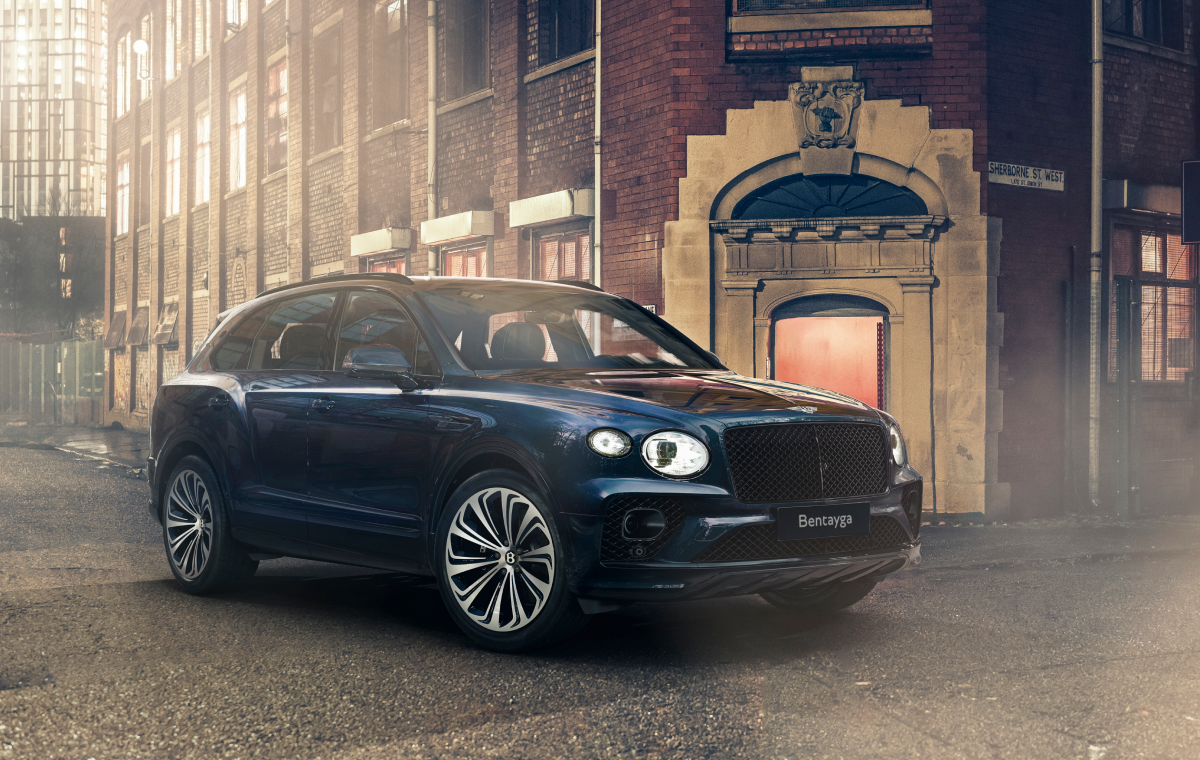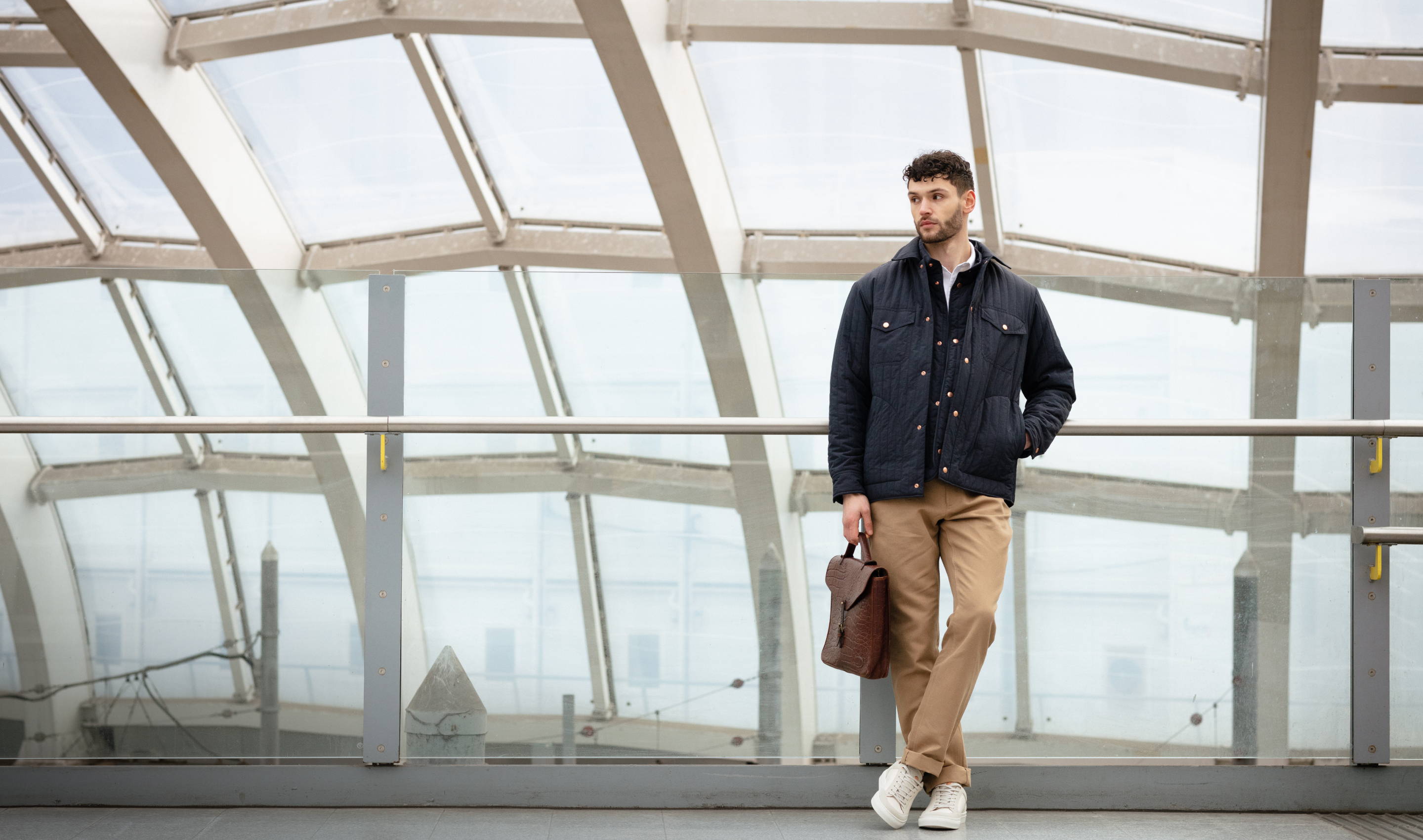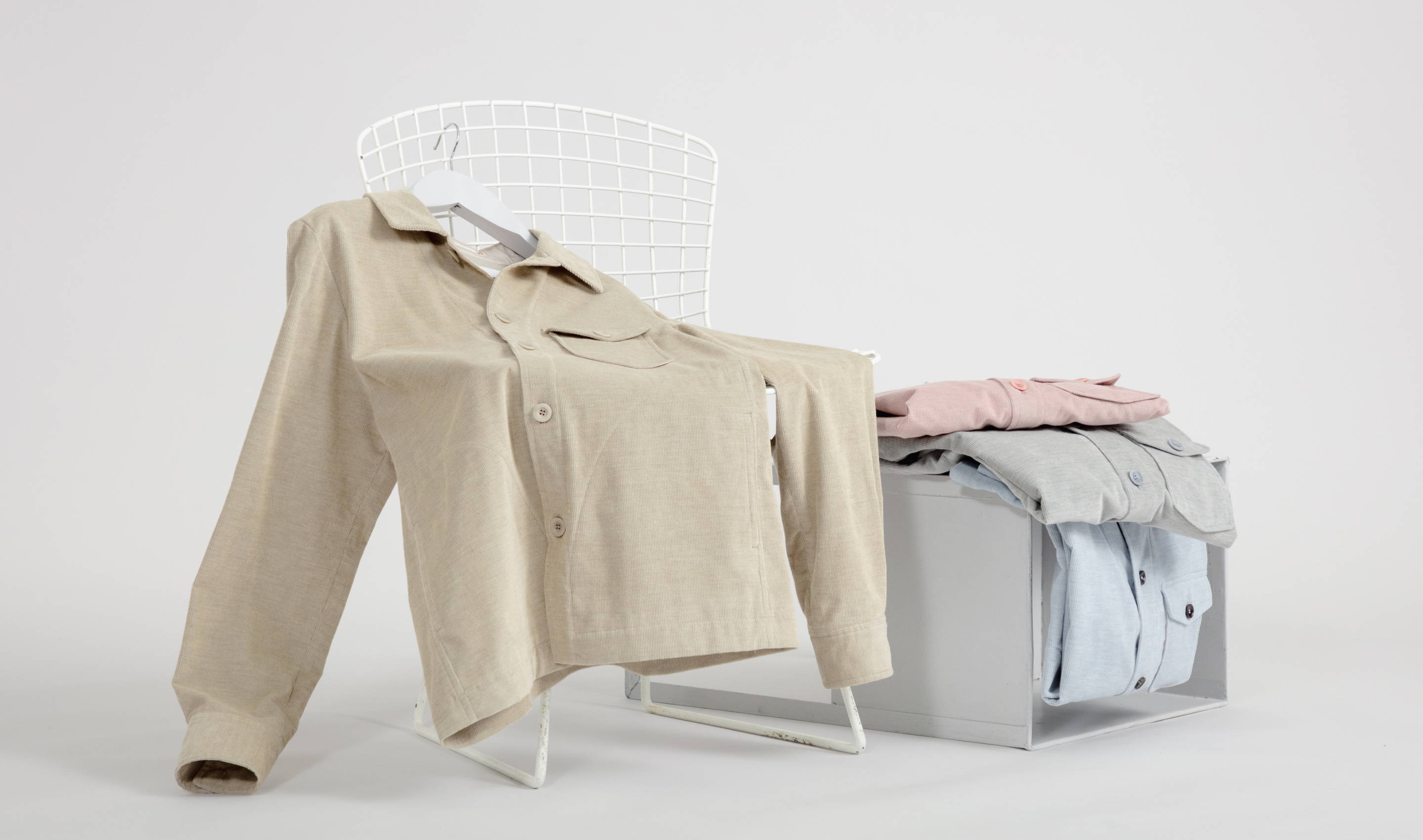The safari jacket deserves its place in the menswear canon. It’s an instantly recognisable piece, evoking a lost time of romance and adventure. A firm favourite of Ernest Hemingway and Roger Moore, it has numerous functional details that were designed to aid the wearer, whether they were on a mission in the bush or travelling to faraway fields. This genre of jacket has lost none of its appeal today. Our factory in Manchester has been producing outerwear for over a century, and in that time this distinctive design has been a regular fixture. Our latest interpretation just so happens to be the best one yet. We’ve refined and constantly worked on its details over the years, tweaking and upgrading until we’ve got to the result you see before you. If you’re in the market for a lightweight, breathable linen jacket that’s entirely functional and stylish, there is no better.
The safari jacket deserves its place in the menswear canon. It’s an instantly recognisable piece, evoking a lost time of romance and adventure. A firm favourite of Ernest Hemingway and Roger Moore, it has numerous functional details that were designed to aid the wearer, whether they were on a mission in the bush or travelling to faraway fields. This genre of jacket has lost none of its appeal today. Our factory in Manchester has been producing outerwear for over a century, and in that time this distinctive design has been a regular fixture. Our latest interpretation just so happens to be the best one yet. We’ve refined and constantly worked on its details over the years, tweaking and upgrading until we’ve got to the result you see before you. If you’re in the market for a lightweight, breathable linen jacket that’s entirely functional and stylish, there is no better.
The safari jacket is, of course, rarely worn on actual safaris. While it was initially designed for this exact purpose, the style has transcended its roots to become a staple of the outerwear world. Go for one in stone and it’ll look right at home on dusky mornings in the savanna, but it’s also the ideal holiday or travel jacket, with its vast pockets and lightweight linen or cotton fabric, which is a signature of the design. Go for a darker olive green or navy and it looks right in the city too, and thanks to its tailored cut and smart collar, it can be dressed up with pleated trousers, shirts and polos. Ours does all of this, and arguably more. It’s more laid back than a blazer but still refined and sharper than a Harrington or bomber. It’s elegant but comfortable, relaxed but well put together.
Indeed, there aren't many situations where our safari jacket wouldn’t work. It has a regular fit, making it neither too slim or relaxed. You can wear it on its own over a T-shirt in spring, or layer it up with heavyweight knitwear or a sunny autumn day.
Ours is so adaptable because we’ve considered every aspect of the design. We’ve simplified the overall look and feel of our field jacket, incorporating many of the traditional details you associate with it, but toning things down slightly, making it look more contemporary and easier to wear. It’s easy to go too far with the safari jacket. Traditional examples are often a little too jazzy, with belts, full button-down bellows pockets, oversized collars and long hems. For ours, we wanted to include many of the style’s typical details, but in a more understated, contemporary way. We’ve gone for a more minimal feel while still retaining everything that makes a safari jacket what it is.
You’ll immediately notice the lack of visible buttons. Ours has a button-through opening but the hidden placket conceals them, resulting in a cleaner, more streamlined and slightly smarter finish. Should you be carrying a bag, camera (or shotgun) across your shoulders, the buttons stay out the way, ensuring nothing gets scratched.
The buttons are also hidden on the front four pockets. Each large flap pocket features a button closure, but the covered flaps keep them out of sight. All the function and practicality of the button pocket remains, but the extra layer of fabric gives a stealthy, pared back look that feels more modern. Speaking of the pockets, we’re particularly proud of their intricate designs. They are half bellows rather than full, again, giving a more refined look.
They are stitched down closely on the inside seam, while the outside corners feature the bellows expansion, so you can easily carry your phone, wallet, paper, tablet or cartridges. The bottom two also boast side entry pockets within them, ideal for keeping your hands warm on cooler days. All four are bar tacked - both on the flap and the pocket itself - for added durability.
Other details include the shoulder epaulettes, a layover from military uniforms and another functional element in that they are traditionally used to store your hat or gloves underneath.
The shirt sleeve cuffs feature two adjustable buttons, and thanks to their construction can be rolled up when it’s warm. Another detail designed for comfort, the rear box pleat allows for an increased range of movement, and makes the jacket feel as though it moves with you rather than against you. In place of a belt we’ve gone with a drawstring adjustable waist, which can be cinched in for a more tailored fit, or left as standard for a more boxy look that’s better for layering chunky knitwear underneath.
And then there’s the fabric. Safari jackets are typically made from sturdy, heavyweight cotton, or linen. We’ve gone for the latter, preferring its breathability and lightweight handle. But we’ve done it slightly differently again. Ours is a 275gsm 100% Irish linen, which is both beautifully soft and robust. You’ll find the linen used on many other safari jackets to be crisp in feel and with a sheen that makes them look cheap. We stonewashed ours to give it a softer, more lived-in look straight off the bat. It also pre-shrinks the fabric, so you can wash it further to your heart’s content and it will retain the exact fit and shape it had when it left the factory.
Traditional safari field jackets are fairly limited in how they can be worn. But thanks to its more minimal detailing, its soft, comfortable fabric and its tailored, customisable fit, ours is surprisingly adaptable. It’s better suited in summer, sure, but leave it un-cinched and you can easily wear a ribbed fisherman’s rollneck underneath it during the colder months. It can also be worn in both relaxed and slightly smarter ways. For something laid back, the natural pairing would be denim jeans.
The weave and texture of denim naturally complements the soft, slubby feel of our linen, and it doesn’t matter which shade of blue you go for either. Dark raw denim looks great with navy or olive-green safaris, while lighter, stonewashed denim is the ideal match to ecru or mustard yellow. Finish with trainers or desert boots, and you’ll be onto a winner.
On the smarter end of the spectrum, you’ll no doubt have noticed the trend for dressing up the safari. High waisted pleated trousers, merino rollnecks and even shirts and ties have all been attempted, with varying degrees of success. We’d aim for something in the middle if you want to try a sharp safari look yourself. A pair of tailored trousers or chinos can work, but don’t go too smart up top. Avoid ties and aim instead for a knitted polo or crew neck, and finish with leather Derbies or boots. This is the perfect compromise - not too smart, not too relaxed. Just like the safari jacket itself.
The safari jacket is, of course, rarely worn on actual safaris. While it was initially designed for this exact purpose, the style has transcended its roots to become a staple of the outerwear world. Go for one in stone and it’ll look right at home on dusky mornings in the savanna, but it’s also the ideal holiday or travel jacket, with its vast pockets and lightweight linen or cotton fabric, which is a signature of the design. Go for a darker olive green or navy and it looks right in the city too, and thanks to its tailored cut and smart collar, it can be dressed up with pleated trousers, shirts and polos. Ours does all of this, and arguably more. It’s more laid back than a blazer but still refined and sharper than a Harrington or bomber. It’s elegant but comfortable, relaxed but well put together.
THE LINEN FIELD JACKET
Indeed, there aren't many situations where our safari jacket wouldn’t work. It has a regular fit, making it neither too slim or relaxed. You can wear it on its own over a T-shirt in spring, or layer it up with heavyweight knitwear or a sunny autumn day.
Ours is so adaptable because we’ve considered every aspect of the design. We’ve simplified the overall look and feel of our field jacket, incorporating many of the traditional details you associate with it, but toning things down slightly, making it look more contemporary and easier to wear. It’s easy to go too far with the safari jacket. Traditional examples are often a little too jazzy, with belts, full button-down bellows pockets, oversized collars and long hems. For ours, we wanted to include many of the style’s typical details, but in a more understated, contemporary way. We’ve gone for a more minimal feel while still retaining everything that makes a safari jacket what it is.
You’ll immediately notice the lack of visible buttons. Ours has a button-through opening but the hidden placket conceals them, resulting in a cleaner, more streamlined and slightly smarter finish. Should you be carrying a bag, camera (or shotgun) across your shoulders, the buttons stay out the way, ensuring nothing gets scratched.
The buttons are also hidden on the front four pockets. Each large flap pocket features a button closure, but the covered flaps keep them out of sight. All the function and practicality of the button pocket remains, but the extra layer of fabric gives a stealthy, pared back look that feels more modern. Speaking of the pockets, we’re particularly proud of their intricate designs. They are half bellows rather than full, again, giving a more refined look.
They are stitched down closely on the inside seam, while the outside corners feature the bellows expansion, so you can easily carry your phone, wallet, paper, tablet or cartridges. The bottom two also boast side entry pockets within them, ideal for keeping your hands warm on cooler days. All four are bar tacked - both on the flap and the pocket itself - for added durability.
Other details include the shoulder epaulettes, a layover from military uniforms and another functional element in that they are traditionally used to store your hat or gloves underneath.
The shirt sleeve cuffs feature two adjustable buttons, and thanks to their construction can be rolled up when it’s warm. Another detail designed for comfort, the rear box pleat allows for an increased range of movement, and makes the jacket feel as though it moves with you rather than against you.
In place of a belt we’ve gone with a drawstring adjustable waist, which can be cinched in for a more tailored fit, or left as standard for a more boxy look that’s better for layering chunky knitwear underneath.
And then there’s the fabric. Safari jackets are typically made from sturdy, heavyweight cotton, or linen. We’ve gone for the latter, preferring its breathability and lightweight handle. But we’ve done it slightly differently again. Ours is a 275gsm 100% Irish linen, which is both beautifully soft and robust. You’ll find the linen used on many other safari jackets to be crisp in feel and with a sheen that makes them look cheap.
We stonewashed ours to give it a softer, more lived-in look straight off the bat. It also pre-shrinks the fabric, so you can wash it further to your heart’s content and it will retain the exact fit and shape it had when it left the factory.
Traditional safari field jackets are fairly limited in how they can be worn. But thanks to its more minimal detailing, its soft, comfortable fabric and its tailored, customisable fit, ours is surprisingly adaptable. It’s better suited in summer, sure, but leave it un-cinched and you can easily wear a ribbed fisherman’s rollneck underneath it during the colder months. It can also be worn in both relaxed and slightly smarter ways. For something laid back, the natural pairing would be denim jeans.
The weave and texture of denim naturally complements the soft, slubby feel of our linen, and it doesn’t matter which shade of blue you go for either. Dark raw denim looks great with navy or olive-green safaris, while lighter, stonewashed denim is the ideal match to ecru or mustard yellow. Finish with trainers or desert boots, and you’ll be onto a winner.
On the smarter end of the spectrum, you’ll no doubt have noticed the trend for dressing up the safari. High waisted pleated trousers, merino rollnecks and even shirts and ties have all been attempted, with varying degrees of success.
We’d aim for something in the middle if you want to try a sharp safari look yourself. A pair of tailored trousers or chinos can work, but don’t go too smart up top. Avoid ties and aim instead for a knitted polo or crew neck, and finish with leather Derbies or boots. This is the perfect compromise - not too smart, not too relaxed. Just like the safari jacket itself.
















Leave a comment
This site is protected by hCaptcha and the hCaptcha Privacy Policy and Terms of Service apply.